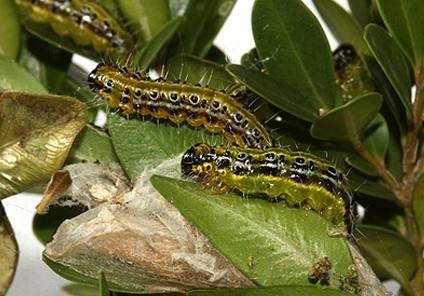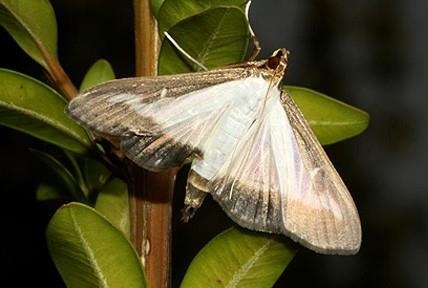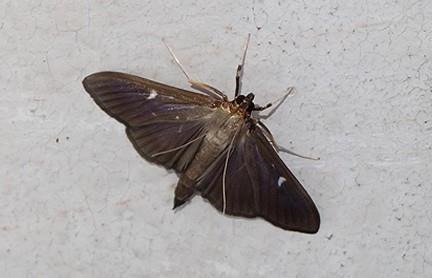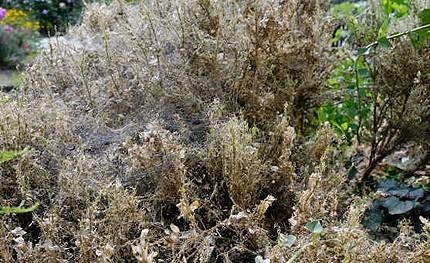These immediate measures are focused on protecting the economic viability of the thriving U.S. boxwood industry as well as nurseries and other establishments that sell these plants wholesale and direct to consumers.
The box tree moth is native to East Asia and has become a serious invasive pest in Europe, where it continues to spread. In 2018, it was found in the Toronto area of Canada. The caterpillars feed mostly on boxwood and heavy infestations can defoliate host plants. Once the leaves are gone, larvae consume the bark, leading to girdling and plant death.
Members of the public can prevent the box tree moth from spreading. Please allow State or Federal agricultural officials to inspect your boxwood trees and place an insect trap if they visit your home. If you bought a boxwood plant within the last few months, please inspect it for signs of the box tree moth and report any findings to your local USDA office or State agriculture department.
Here are some signs to help identify the presence of box tree moth:

Egg mass under the leaves
(Courtesy of Walter Schön, www.schmetterling-raupe.de/art/perspectalis.htm)

Caterpillars and webbing (larvae can reach 1.5 inches long)
(Courtesy of Matteo Maspero and Andrea Tantardini, Centro MiRT - Fondazione Minoprio [IT].)
Adult moths (wingspan is 1.5 to 1.75 inches):

(Courtesy of Matteo Maspero and Andrea Tantardini, Centro MiRT - Fondazione Minoprio [IT].)

Dark form of the moth.
(Courtesy of Ilya Mityushev, Department of Plant protection of the Russian State Agrarian University - Moscow Timiryazev Agricultural Academy.)

Pupa
(Courtesy of Ilya Mityushev, Department of Plant protection of the Russian State Agrarian University - Moscow Timiryazev Agricultural Academy.)

Damage
(Courtesy of Colette Walter, http://www.lepiforum.de/webbbs/images/forum_2/pic13983.jpg).
Source : usda.gov